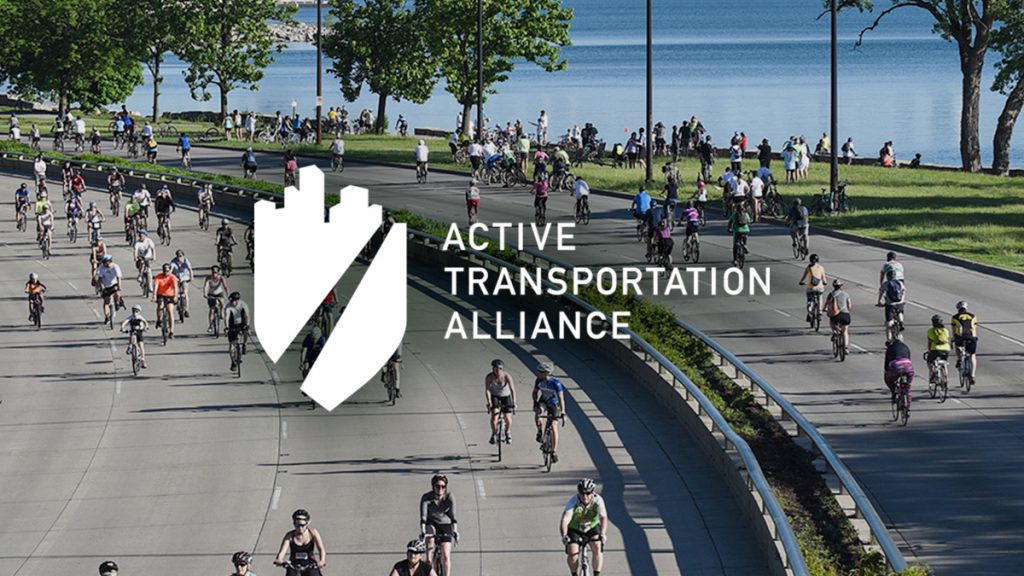The Chicago Department of Transportation (CDOT) today released an ambitious two-year Action Agenda (PDF) and joined the growing Vision Zero movement, aiming to eliminate all traffic crash fatalities in Chicago within 10 years. We’re excited to see such a commitment in this document toward safety, active transportation and complete streets. It’s also refreshing to see a comprehensive, truly multi-modal approach, addressing all transportation options (including driving), rather than compartmentalizing biking, walking and transit.
Here are some highlights that caught our eye to help break it down for you (including some paraphrasing).
Safety
-
Reduce total roadway crashes and injuries from all roadway crashes, each by 10% every year.
-
Develop strategies, and action plan, and funding resources to bring transformation of residential streets to a 20mph standard.
-
Work with the Police Department to integrate greater enforcement of pedestrian and bicycle protection regulations into officers’ regular duties and activities.
-
Provide non-motorized traveler safety trainings for taxi drivers and city fleet drivers.
Pedestrians and public space
-
Install countdown pedestrian signals at 300 intersections in 2012 and, if funding is available, 100 more intersections in 2013.
-
Install Leading Pedestrian Intervals (LPI) at 100 intersections in 2012 and, if funding is available, 100 more intersections in 2013.
-
Open some boulevards or other major streets to pedestrians, bikes and non-motorized uses exclusively on selected weekend periods.
-
Investigate the feasibility of new plazas and patios in underutilized portions of the public right of way and implement pilot site locations by 2013.
Bicycling
-
Develop policies and standards for bicycle signals and leading bicycle intervals, deploy at least 10 pilot locations in conjunction with protected bike lanes, and collect data for evaluation.
-
Renew 125 miles of existing on-street bikeways by 2014, updating configurations as necessary.
-
Improve cycling conditions on Chicago streets in several ways: install 100 miles of protected bikeways and 10 miles of neighborhood greenways by 2015, and install 10 additional miles of bike lanes and marked shared lanes each year.
-
Challenge business associations and other partners to install at least 10 additional on-street bike parking corrals by 2013 toward a target of 25 by 2014.
Transit
-
Improve CTA on-time performance.
-
Increase the average daily CTA ridership on a majority of routes.
-
Support CTA’s ongoing efforts to advance long-range “New Start” rail network expansion plans, including southern extensions of the Red and Orange Lines.
Trails
-
Begin concept design for rebuilding North Lake Shore Drive from Grand to Hollywood; explore potential Lakefront Trail improvements during Phase 1 engineering
-
Begin the design of the Weber Spur Trail that will connect the Elston Bike Lane, the Sauganash Trail, and upcoming Forest Preserve and Village of Lincolnwood trails.
-
Begin the design of the North Branch Riverwalk Trail connection under the Addison Street Bridge.
Other
-
Remove obsolete (and costly-to-maintain) 60’s-era roadway overpasses at Western Avenue over Belmont and at Ashland Avenue over Pershing Road and replace each with attractive, modernized intersections that meet Complete Streets standards.
-
Increase the percentage of potholes patched or fixed within 72 hours.
-
Encourage the Illinois Department of Transportation (IDOT) to remove the arbitrary cap placed on Safe Routes to School funding; instead, apply the formula the federal government uses in providing the funding to states (i.e., by number of school-age children enrolled).
-
Develop a “dashboard” to report progress against goals and actions from this report (and elsewhere) as Key performance Indicators (KPIs). Progress on the KPI goals will be published on CDOT’s website.

